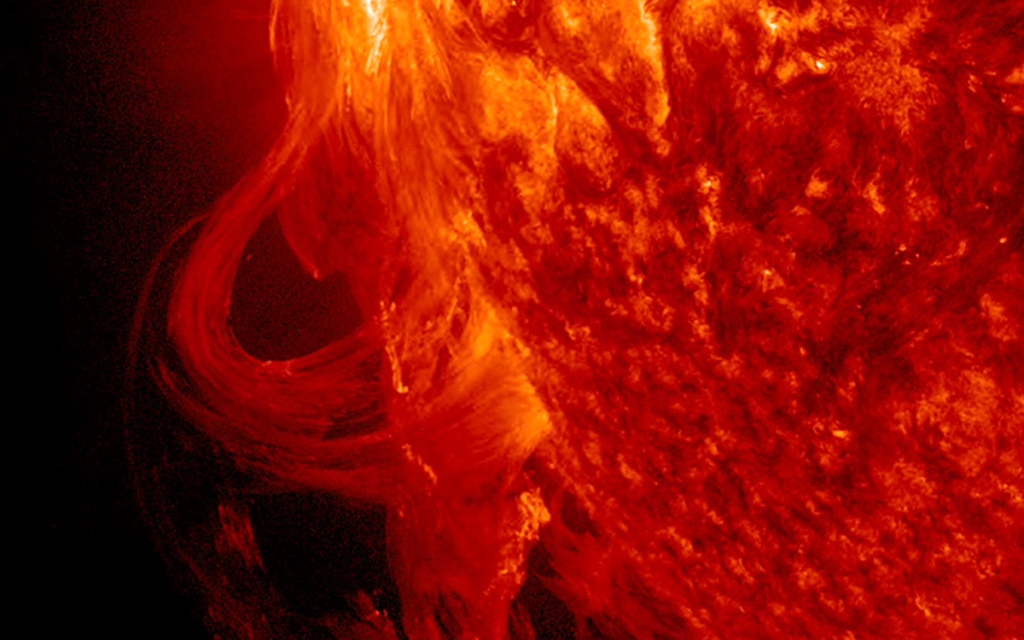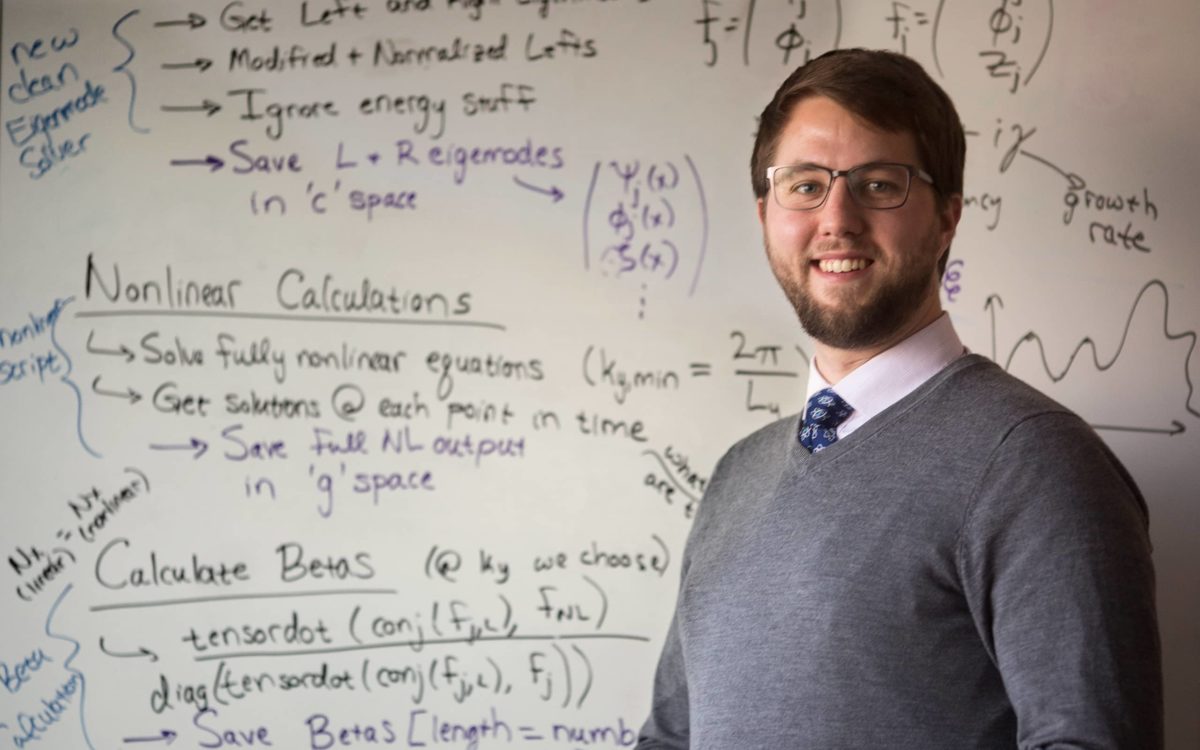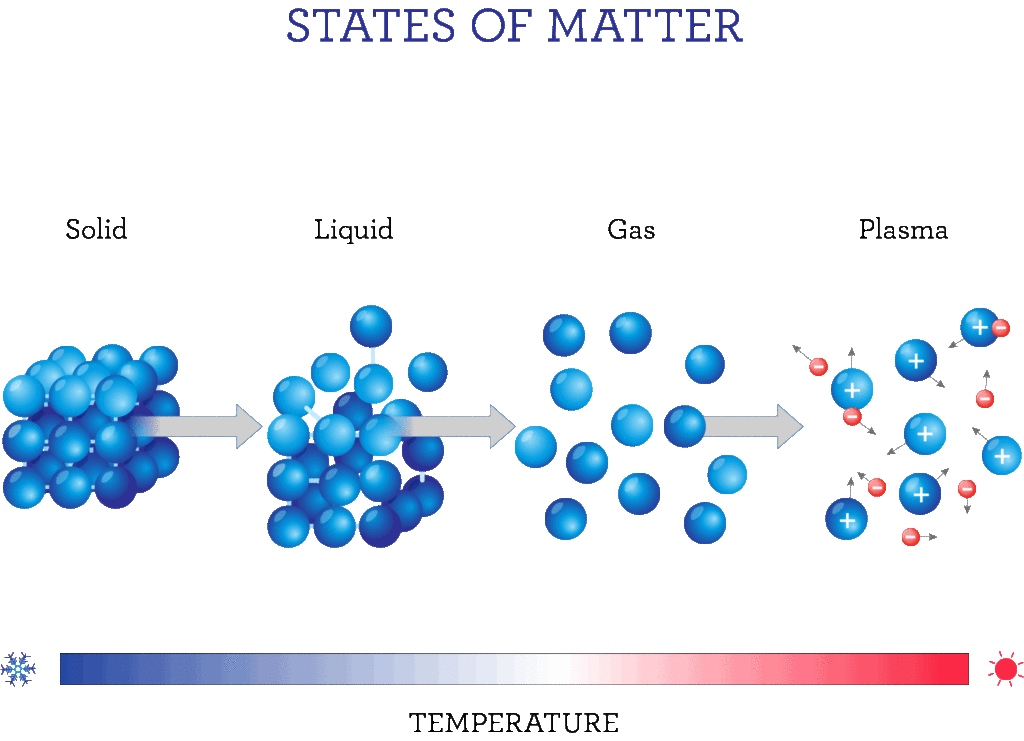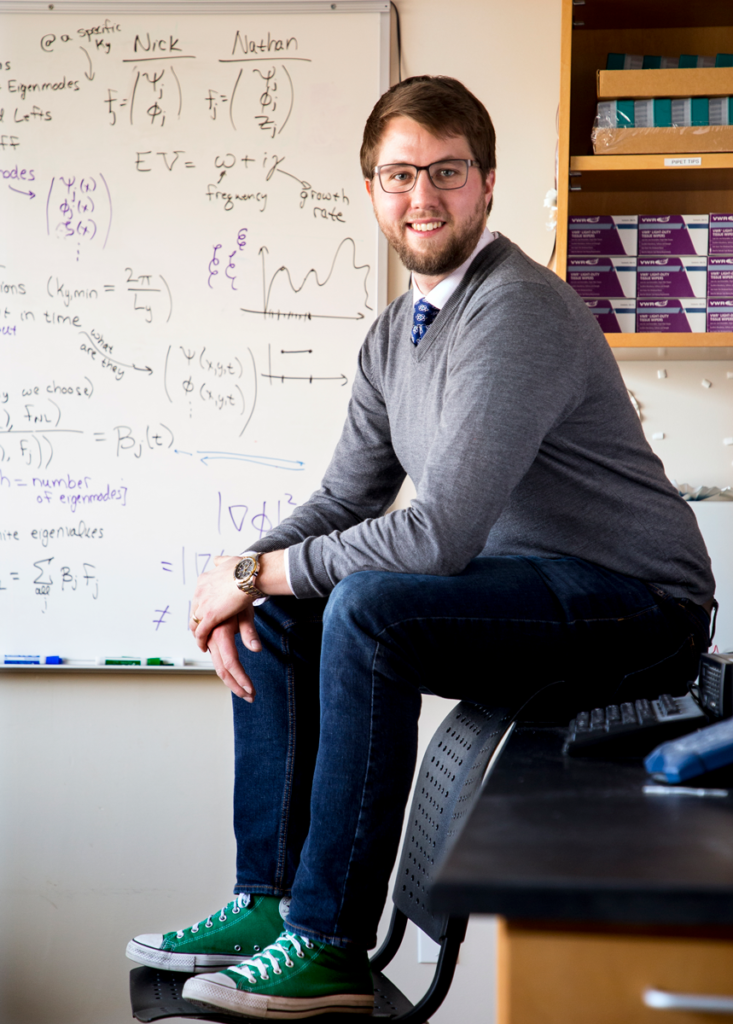Probing the Nature of “Stuff”
It’s Not a Solid, Not a Liquid, Not a Gas, but It’s Crucial to Clean Energy and Nuclear Fusion
Dr. Zachary Williams
Given Dr. Zachary Williams’ hometown heritage and mathematical proclivity, studying physics may have always been a bygone conclusion — much to his relish, and Hope’s.
Williams grew up on Florida’s “space coast” near the Kennedy Space Center. “Everyone in my hometown was, at most, one or two degrees removed from a NASA affiliation,” he says. His natural penchant for math steered him into mechanical engineering — and from there his magnetic fascination with “probing the nature of stuff” pulled him into physics.
It was evident to him from the start that the need for clean energy would make nuclear fusion “a huge, world-changing revolution once we get that working,” Williams says. So he focused his research efforts on a key component of the process: plasma — the fourth state of matter.
“You need super-high temperatures to make fusion happen. And when you’re working with very high temperatures, you necessarily have to be working with plasma,” he says. Williams found his niche in studying the dynamics at play in plasma, the super-hot, electrically charged fluids that make up our sun — and, indeed, the enormous majority of all normal (read, non-dark) matter in the universe.
“Plasma is just another state of matter, like solids, liquids and gases. We know those very well, and going between them is really just a matter of turning our temperature knob up,” Williams explains. “If I have a solid cube of ice and I turn up the temperature, it melts into a liquid. If I turn up the temperature again, it evaporates into a gas. And if you keep turning up the temperature on a gas, eventually what happens is the molecules that make up that gas will split into their component parts that are electrically charged — what we call ions and electrons.”
It’s more complicated than it sounds.
“Plasma has properties similar to fluids, behaving much like a gas, but with an added property of electric charge,” Williams says. “So it has to combine electricity and magnetism and fluid dynamics and mash it all into a horribly complicated mess. And that’s what we call plasma physics.”
In the past, faculty at Hope College have conducted research in a microplasma lab, investigating the strikingly different properties of plasma that forms in exceedingly tiny spaces. While microplasma can be directly observed in a lab environment (albeit on a miniscule scale), the plasmas at play in our sun are rather less accessible and quite a lot more electrically charged. Consequently, they’re studied in the realm of computation. (This introduces a further complicating factor in plasma physics, one most people are familiar with on a much smaller scale: computers and their glitches.)
Williams and his students don’t study plasma directly; they model its behavior using computer simulations, working to put together the puzzle that is turbulence — the chaotic and unpredictable movement of plasma — one intricate piece at a time.
Turbulence, Williams says, “is this big unsolved problem. We’re not necessarily trying to say, Yes, we’ve solved turbulence. We say: All right, given that we have to deal with it, what sort of understanding can we develop? What sort of predictions can we make? We’re trying to see how effective it is to home in on a couple of much simpler, much more understandable phenomena, and see if by just focusing on those and combining them in a clever way we can do a good job — not a perfect job, but a good job — of reproducing this otherwise really difficult-to-describe system.”
It’s valuable for physicists to glean understanding of turbulence because it plays a significant role in nuclear fusion experiments and potentially in the sun’s coronal mass ejections (whose interactions with Earth’s magnetic shield result in the visually stunning northern lights). The former is key because nuclear fusion is essential for nuclear power production. The latter is important because — given enough oomph — coronal mass ejections may wreak havoc with electrical infrastructure in Earth’s orbiting satellites.

“At this stage, we’re trying to look at this fundamental question: Can we glean a good amount of useful information by filtering out a lot of the mess and focusing on just a few fundamental aspects of the dynamics?” Williams explains. Even piecemeal, the task is a daunting one.
“It’s not just a straight line: do this, get output, get results, done. It’s a very winding path to get from A to B any time you’re working with computation,” Williams says. “There are all sorts of unexpected and unforeseen variables that you have to deal with. It takes time and code development and patience — and, hopefully, a good sense of humor — as you struggle through all the different aspects.”
“It’s not just a straight line: do this, get output, get results, done. It’s a very winding path to get from A to B any time you’re working with computation… It takes time and code development and patience — and, hopefully, a good sense of humor.”
When the modeling process goes relatively smoothly, it’s a matter of simulating plasma turbulence and isolating a few significant eigenmodes — a fancy word for fundamental ways that plasma can “wiggle.” Then Williams and his students run simulations with just those pieces in play, investigating how they vary from the whole and, crucially, how they remain the same.
“The hope would be that as we gain understanding and as this project evolves, it could be applied to talking about dynamics associated with coronal mass ejections in the sun’s atmosphere, or with tearing instabilities in fusion plasmas,” Williams says.
Piecemeal insights and discoveries notwithstanding, the beautifully (and frustratingly) dynamic, complicated, intricate and turbulent chaos is bound to remain. “You know, we kind of have to play with the hand that we’re dealt when it comes to the laws of the universe,” Williams says.



